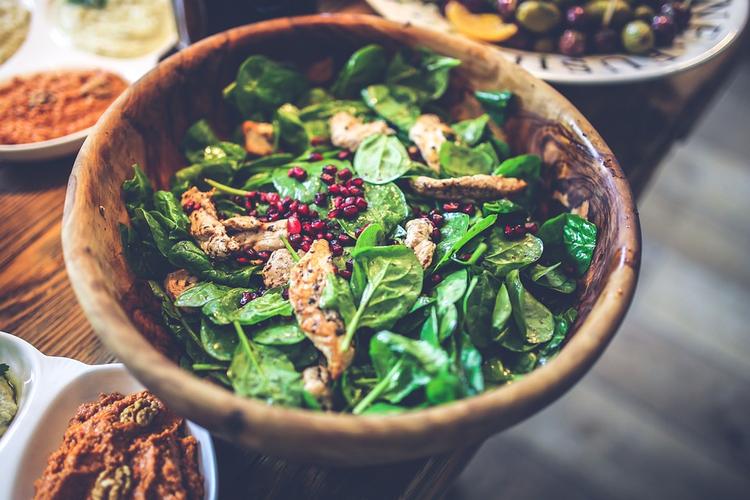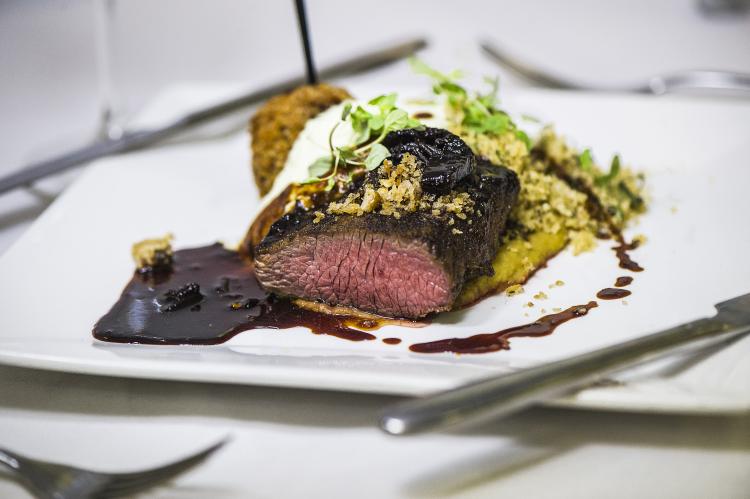What’s vital to keep in mind is that when it comes to events and conferences, what you’re serving does make a difference.
So what are the best foods for conferences and events from a nutritional point of view? The ideal outcome is fairly obvious: food needs to taste great and participants need to feel awake, alert and ready to engage. Our event partners at AlchemyLive explain the science behind the food:
1. Choose slow release carbohydrates
Sugary ‘high energy’ foods are broken down quickly by the body, resulting in a burst of energy followed by a ‘crash’. This will end up making conference and event participants grumpy and inattentive.
In contrast, slow release carbohydrates keep you feeling fuller for longer because they’re broken down far more slowly. Examples of slow release carbohydrates are vegetables like asparagus and broccoli, as well as whole grains. If you want to maintain energy, satiation and engagement levels at your conference, be sure to plan your meals around these kinds of foods.
2. Eat (Oily) Fish
Oily fish like salmon, halibut, mackerel and tuna contain essential fatty acids that can’t be produced by the body. These fats, of which Omega-3 types are the most well known, contribute to vascular health and memory, and can also reduce joint pain. Similar fats are also available in the form of edible seeds and nuts – most notably walnuts.
If you’re organising food for a conference in central London, fish might not be what comes to mind first and foremost, but it’s still worthwhile seeing whether you can put it on the menu.
3. Create nutritionally balanced meals
Nutritionally balanced meals are not complicated; we’re talking starch, protein and fibre, plus some fruit and/or vegetables. Eating them, however, will increase productivity and reduce stress among guests at your event. Fresh, overtly healthy meals will also often taste better to conference attendees. At least one study has shown that our perception of the healthiness of a food will influence its taste, with healthier, more ‘virtuous’ options seeming more flavourful.
This is the event planning equivalent of having your cake and eating it (eating a little of it).
4. Use plenty of ‘superfoods’
So-called ‘superfoods’ are packed with nutrients and generally low in calories:
Cruciferous vegetables (the cabbage family). Which includes kale, broccoli, watercress, cauliflower and bok choy. These are very high in vitamin C, important nutrients and soluble fibre.
Beets, spinach and avocados. They’re high in a folic acid and contain several important minerals including manganese, which is vital for our metabolisms and development.
Strawberries, goji berries and coconuts. Some of the healthiest fruits available (okay, so strawberries aren’t really a fruit), all three are very nutritious with a high composition of vitamins and minerals.
5. Cooking to preserve those health benefits
Up to 20% of the vitamin content of vegetables can be lost to the cooking process, especially if too much heat is applied.
The ‘best’ way to cook food might sometimes be to leave it raw. This is great for salads, but obviously not quite as practical for meat and fish. Good cooking methods to maximise the health benefits of your food are steaming and grilling.
In conclusion...
What’s vital to keep in mind is that when it comes to events and conferences in central London, what you’re serving does make a difference.
That’s why it’s up to event organisers to choose the right kind of food and make it work. If you’re interested in a menu that will keep participants active, invigorated and engaged throughout your event, speak a member of our team today.



.jpg)